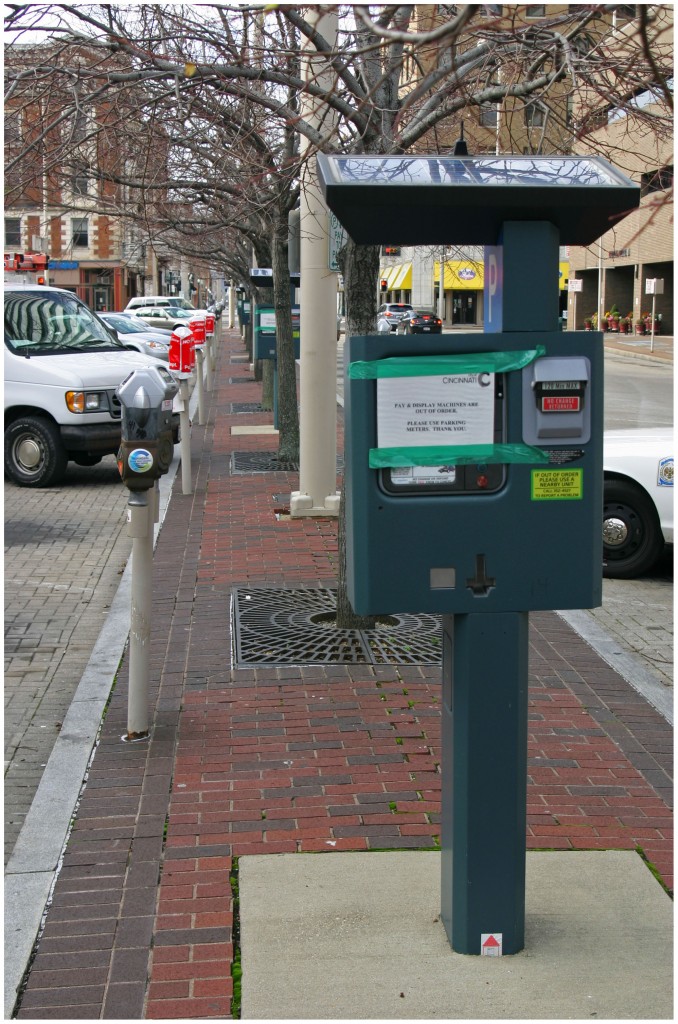
Approximately one decade ago, then City Manager John Shirey engaged in a real-world experiment with the way people use parking meters. The idea was that consolidated solar-powered parking kiosks could make the process more cost effective and beneficial for users and business owners. The reality, however, has been different.
The first kiosks made their way onto Third Street in downtown Cincinnati. Those two, $8,000-a-piece, kiosks were then followed by an additional ten kiosks on Court Street and Third Street. Early on it was touted that the maintenance costs would be less for these kiosks as opposed to the many individual parking meters they replaced. What seemed to spell the end of these kiosks, however, may have been the lack of maintenance they received.
Almost from the first year they were installed, users complained of problems with pay-and-display parking kiosks. Money would jam, credit card readers did not work, or the whole kiosk was for some reason malfunctioning.
These early and ongoing problems eliminated the possibility for users to see any potential benefit from the new form of paying for on-street parking. The early problems also eliminated virtually any and all possibility of the system growing into what was envisioned for it.
Originally, city leaders discussed the idea of allowing downtown visitors to purchase monthly parking passes for the pay-and-display kiosks. They also mentioned the idea of allowing a user on Court Street to take their extra time and use it somewhere else downtown without having to pay a second time. Both ideas were well intentioned, but both ideas never happened.
Maintenance issues aside, individuals around the country have complained about the lack of an individual parking meter at their space. The personal relationship between a person, their car, and their assigned meter is obviously stronger than what city officials thought.
The city appears to now have abandoned this experiment gone wrong. The pay-and-display parking kiosks on Court Street have been shut off and replaced by new individual electronic parking meters that are solar powered. Those meters are part of a larger $1.7 million effort to replace all 1,400 parking meters downtown with the new technology.
In cities where space on the sidewalk is a big concern, the initiative to reduce street furniture like parking meters should continue to remain a priority. In Cincinnati, however, most streets do not suffer from this severe lack of space, and therefore it is probably a better approach to use individual parking meters with these technological upgrades rather than completely overhauling the system.
While the parking kiosks originally envisioned by City Manager Shirey did not pan out, he should be commended for his leadership, because without that Cincinnati may not be where it is now in terms of upgraded the rest of its on-street parking payment technologies.
City officials should continue to explore creative options for its parking assets. In 2010 UrbanCincy estimated that a public-private parking partnership could result in an additional $3.06 million in revenues annually. The possibilities of leveraging these assets are intriguing, and nothing should be left off the discussion table during this time of limited resources.
